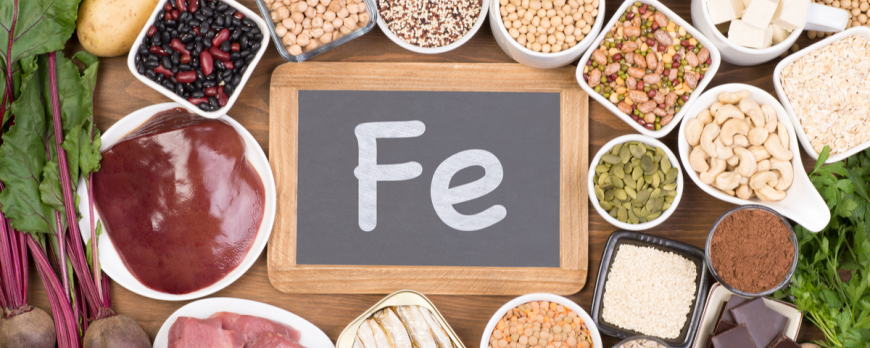
Iron: Overview and key foods
We're currently professionally translating all content. In the meantime, this article has been translated by Google Translate. Sorry if this isn't 100% relevant.
Our body contains 3 to 4 grams of iron, 70% of which is in the blood and 10% in the muscle. Iron is essential for the production of hemoglobin and myoglobin. Hemoglobin carries oxygen in the blood and myoglobin transports oxygen into the muscle. It is therefore easy to understand that a decrease in iron will have a negative impact on performance. Iron is also used for the synthesis of DNA and some proteins, it modulates dopamine and the production of norepinephrine. As a reminder, these two neurotransmitters are essential for proper brain function, they allow to obtain and now good concentration, good motivation, to make the right decisions, to have good reflexes and good motor skills.
Iron deficiency is common in western countries, especially among young women (because of bleeding due to their periods). In Switzerland, 1 in 4 women is deficient, compared to 1 in 16 men.
Iron among athletes
Athletes, but also athletes, are often lacking iron for several reasons:
Their diet is often not adapted to their real needs
They often sweat a lot and can lose iron through sweat
They suffer from intestinal disorders that can cause loss of iron in the feces
Regularly found in athletes with problems of red blood cells (loss of blood in the urine, although this is not necessarily visible)
The consumption of products containing caffeine, which athletes are often fond of
They poorly assimilate iron through the intestine, whose bacterial flora and often too poor in good bacteria
Copper deficiency, common in athletes, prevents normal assimilation of the follow
For foot runners, the impact of the feet on the ground with each stride, break more easily red blood cells (haptoglobin often low) and loses iron more easily.
All these reasons show that it is advisable to have your iron and ferritin levels checked regularly, especially if you suffer from the various clinical signs of a deficiency: hair loss, weakened nails, chronic fatigue ...
Iron in food
Solutions, of course, go through diet and perhaps supplementation as well, but be careful - a surplus of iron is worse than deficiency.
Iron-rich foods are offal, red meat, poultry, seafood, fish and pulses. Always try to associate these foods with vegetables or fruits rich in vitamin C, which will allow a better assimilation of iron!
Beware of caffeine! It inhibits the assimilation of iron. Thus, you should not drink coffee or tea within the hour before or after a meal consisting of iron-rich foods (or consumption of spirulina for example).
Discover our recipe of lamb fillet with beans and artichokes, to refuel with iron.
And spinach?
Are spinach rich in iron? No ! This is a false belief in nutrition dating back to 1870! At the time, a German biochemist (Emile von Wolff) would have mistakenly assigned them an iron content of 27 mg per 100 g, instead of the actual 2.7. A typo, therefore. But some 60 years later came Popeye, who was supposedly stronger after eating his spinach! And if the legend remains intact in our time, it remains nonetheless erroneous.
But the nutritional values of spinach are still interesting (richness in magnesium, vitamins A, B9, E, C, ...).
Iron complementation
Hard to talk about iron without mentioning spirulina. WHO proclaimed it "the best food for humanity in the 21st century". Indeed, this microalgae (cyanobacteria) is particularly rich not only in iron but also in proteins, vitamins, minerals and antioxidants.
Be sure to always eat it organic, without additives and resulting from a slow drying method - which allows to preserve its nutritional richness.
Laissez un commentaireRépondre
Recherche sur le blog
Blog categories
